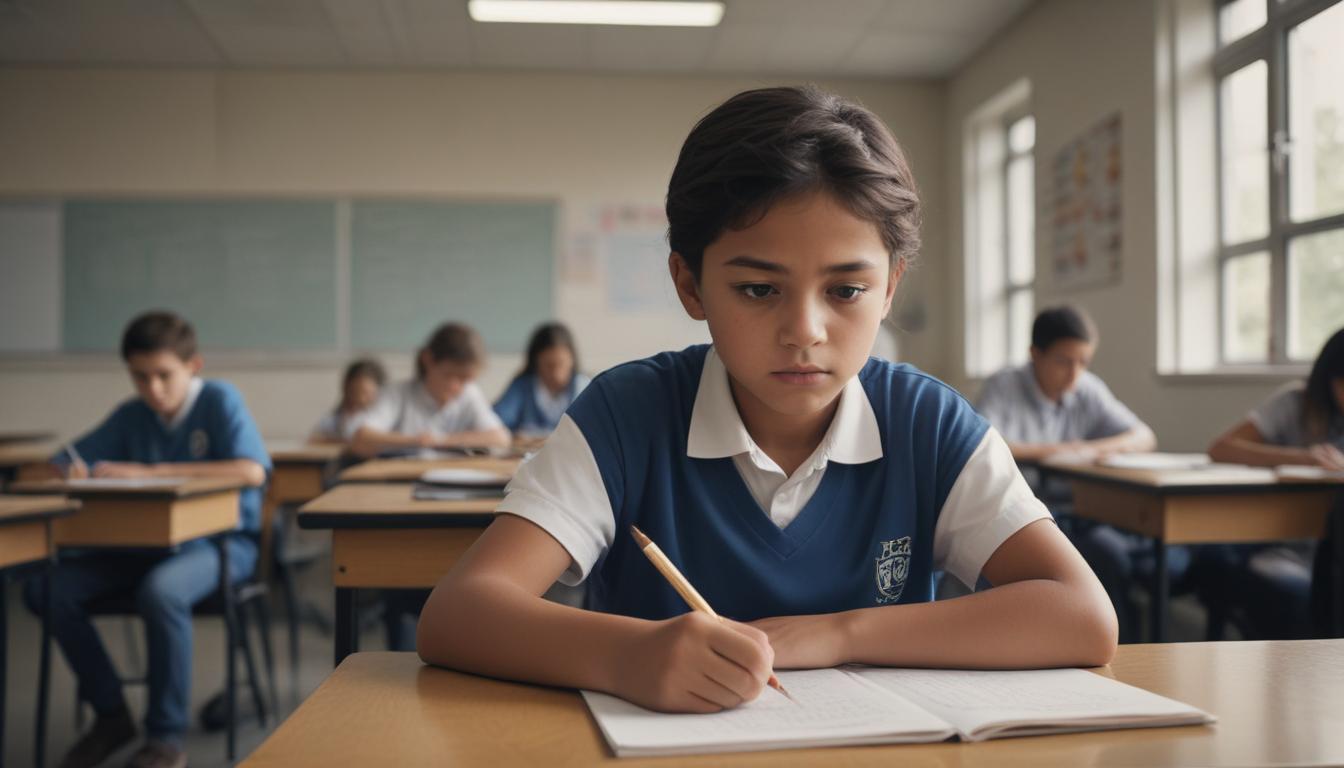Now Reading: How Resilience Boosts Student Success
- 01
How Resilience Boosts Student Success
How Resilience Boosts Student Success

Building Future-Ready Students Why Resilience in Education is Key
The Importance of Resilience in Education
Are you watching your child or student struggle with the slightest setback? In a world of high expectations and constant pressure, it’s easy for young people to feel overwhelmed by a poor grade, a social misstep, or a challenging assignment. You worry that they lack the toughness to navigate the inevitable hurdles of life, and you feel helpless, wondering how to prepare them for a future that is anything but predictable.
The instinct is often to clear the path for them, to remove every obstacle. But what if the goal wasn’t to prevent every fall, but to teach them how to get back up, stronger than before?
This is the core of resilience, the essential skill of adapting well in the face of adversity, trauma, and stress. It is not about being shielded from difficulty; it is about developing the mental and emotional fortitude to push through it. Fostering resilience is one of the most critical missions of modern education. It is the key that unlocks a student’s ability to learn from failure, manage stress, and ultimately thrive not just in the classroom, but in all aspects of life. This guide will explore exactly what resilience means in an educational setting and how you, as a parent or educator, can actively cultivate it.
What is Resilience in an Educational Context
Resilience in education is far more than simple toughness or the ability to “power through” a difficult situation. It is a dynamic process that involves emotional regulation, flexible thinking, and a deep-seated belief in one’s own capabilities. A resilient student is not one who never feels stress or disappointment; they are one who experiences those feelings but possesses the tools to navigate them constructively. They can acknowledge a failure, process the emotions tied to it, and look for a path forward without being completely derailed.
This concept is deeply intertwined with what Stanford psychologist Carol Dweck calls a “growth mindset”. Students with a growth mindset believe that their abilities and intelligence can be developed through dedication and hard work. They see challenges not as threats, but as opportunities to grow. This contrasts sharply with a fixed mindset, where students believe their talents are innate gifts, causing them to fear failure as a sign of their own inadequacy. Resilience, therefore, is the practical application of a growth mindset, giving students the grit and perseverance to apply effort even when success isn’t immediate.

Practical Strategies to Cultivate Resilience in Students
Building resilience isn’t a passive process; it requires intentional effort from both educators and parents. The good news is that it is a skill that can be taught and reinforced through specific, consistent practices. By shifting our language and reframing our approach to challenges, we can create an environment where bouncing back becomes second nature.
Encourage a Growth Mindset
The foundation of resilience is the belief that you can improve. To foster this, it is crucial to change the way we offer praise and feedback. Instead of praising innate ability (“You’re so smart!”), focus on the process and the effort (“I saw how hard you worked to solve that problem,” or “Your persistence on that essay really paid off”). This simple shift teaches students that their effort is what truly matters, which empowers them to tackle harder problems without the fear of no longer seeming “smart” if they fail.
Furthermore, actively talk about the brain as a muscle that gets stronger with exercise. When a student encounters a difficult concept, frame it as a chance for their brain to build new connections. This language transforms a moment of frustration into a positive, empowering experience. Normalizing the struggle as part of the learning process removes the shame associated with not knowing something immediately and encourages students to lean into challenges rather than shying away from them.
Normalize Failure as a Learning Opportunity
In many educational settings, failure is treated as a final, negative outcome. To build resilience, we must fundamentally reframe failure as a vital data point on the path to success. It is not an endpoint but a redirection. When a student receives a poor grade or performs badly on a project, the conversation should not end there. The most important part of the learning process comes next.
Ask reflective questions that promote learning and problem-solving. Instead of focusing on the disappointment, guide them with inquiries like, “What did you learn from this experience?” or “If you could do it again, what would you do differently?” This approach moves the student from a place of passive regret to active analysis. Sharing stories of successful individuals who experienced significant failures can also be incredibly powerful, demonstrating that setbacks are a normal and often necessary part of any meaningful journey.
The Role of Educators and Parents as Resilience Coaches
Ultimately, adults in a student’s life are their primary resilience coaches. This role is not about being a rescuer who solves every problem, but a guide who provides support while allowing the student to navigate their own challenges. Modeling resilient behavior is one of the most effective teaching tools. When you face a setback, talk about it openly. Discuss how you feel, what you learned, and what your next steps are. This shows students that everyone faces difficulties and provides a real-world blueprint for how to handle them.
By focusing on building resilience, we are providing one of the most durable and valuable gifts we can offer the next generation. We are not just preparing them to get good grades; we are equipping them for a complex, unpredictable world. A resilient young person is armed with the self-awareness, confidence, and perseverance to face whatever life throws their way, transforming obstacles into opportunities and building a foundation for lifelong well-being and success.





































